When to Choose Webflow + Shopify Over Pure Shopify
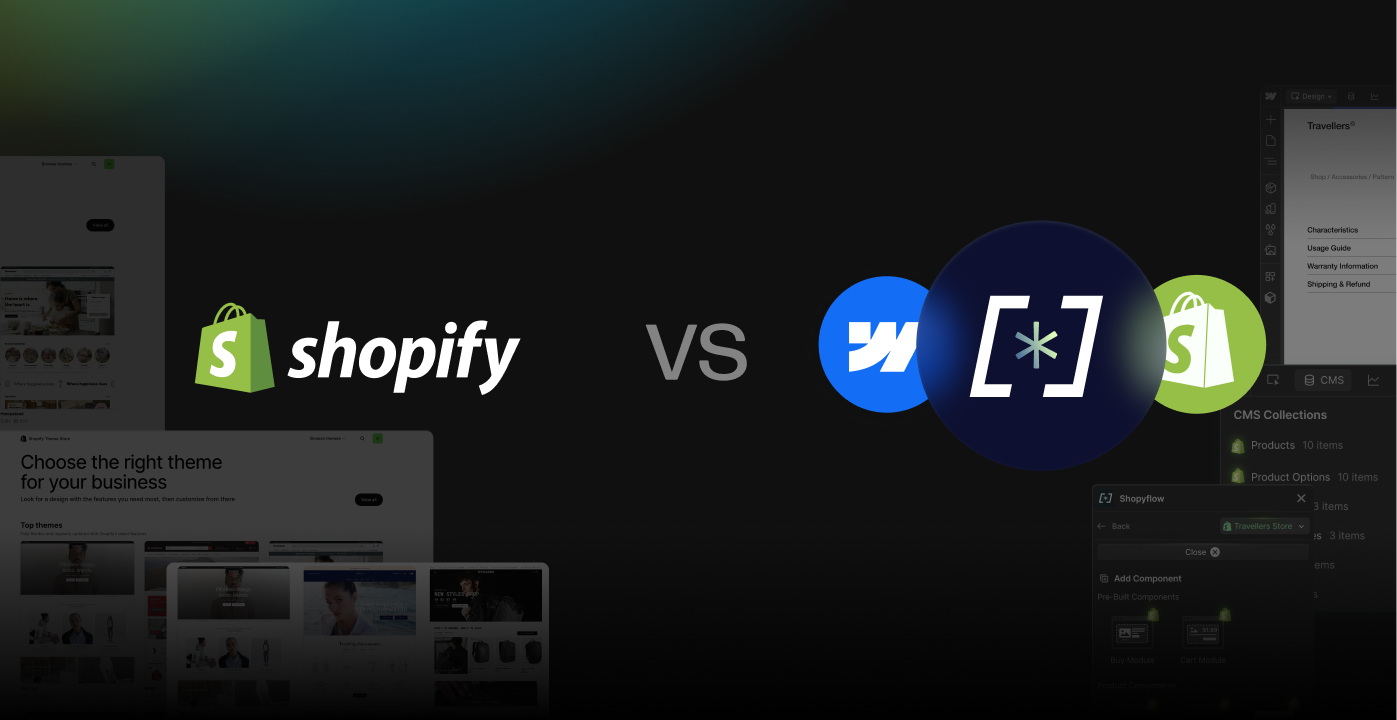
There's a moment of reckoning every growing e-commerce brand faces: when their Shopify theme starts feeling like a serious roadblock to growth.
Template limitations are restricting your brand just when differentiation matters most. According to research published in Electronic Commerce Research and Applications, certain website design features convert more e-commerce visitors to purchasers – those that promote flow, a psychological state of immersion.
Yet with hundreds of themes in the Shopify Theme Store, plus thousands more on marketplaces like Themeforest and CreativeMarket, countless stores share virtually identical layouts. 94% of initial impressions are heavily influenced by design, meaning brands using similar templates are literally competing on first impressions with eerily similar visual strategies.
The (expensive) alternatives don’t solve the problem either:
- Purchasing premium themes (ranging from $50-$300) still leaves you with designs you’ll share with multiple other stores. Plus, this calls for hours of costly developer time for even basic customization.
- Using Shopify page builders (starting at $25/month) promises flexibility but delivers severely limited design capabilities and page restrictions that fall far short of what today’s brands need.
- Going fully headless with custom JavaScript offers ultimate control but requires massive development investments and months of build time.
Each option forces the same frustrating trade-off: accept creative limitations or drain your budget on complex workarounds.
But there's a solution that eliminates the false choice between beautiful design and robust e-commerce functionality: the Webflow + Shopify integration.
Read on to find out why this approach combines the best of Shopify & Webflow, how to make the decision, what the costs are, and how exactly you can integrate both platforms. ⬇️
Why pure Shopify falls short for design-driven brands
Shopify revolutionized e-commerce by making online selling accessible to everyone. But that same democratization created an unexpected problem: when everyone has access to the same tools, everyone starts looking the same.

Shopify's design limitations and template constraints
The platform's strength, its streamlined, template-based approach, becomes a creative straitjacket the moment your brand needs to stand out.
Shopify excels at handling transactions, inventory, and logistics, but it treats design as an afterthought, forcing ambitious brands into a one-size-fits-all visual framework that dilutes their unique value proposition.
Limited design flexibility
Shopify's section-based architecture means designers need to work within predetermined structural boundaries, where deviating from the default structure typically requires digging into Liquid templates and custom code. This makes non-standard designs a nightmare to implement.
Generic brand expression
With more than 220 themes in the Shopify Theme Store, the mathematical reality is that thousands of stores share very similar layouts. Unique visual storytelling is hard to achieve without substantial customization work, so it’s difficult for brands to stand out in increasingly competitive markets where first impressions matter most.
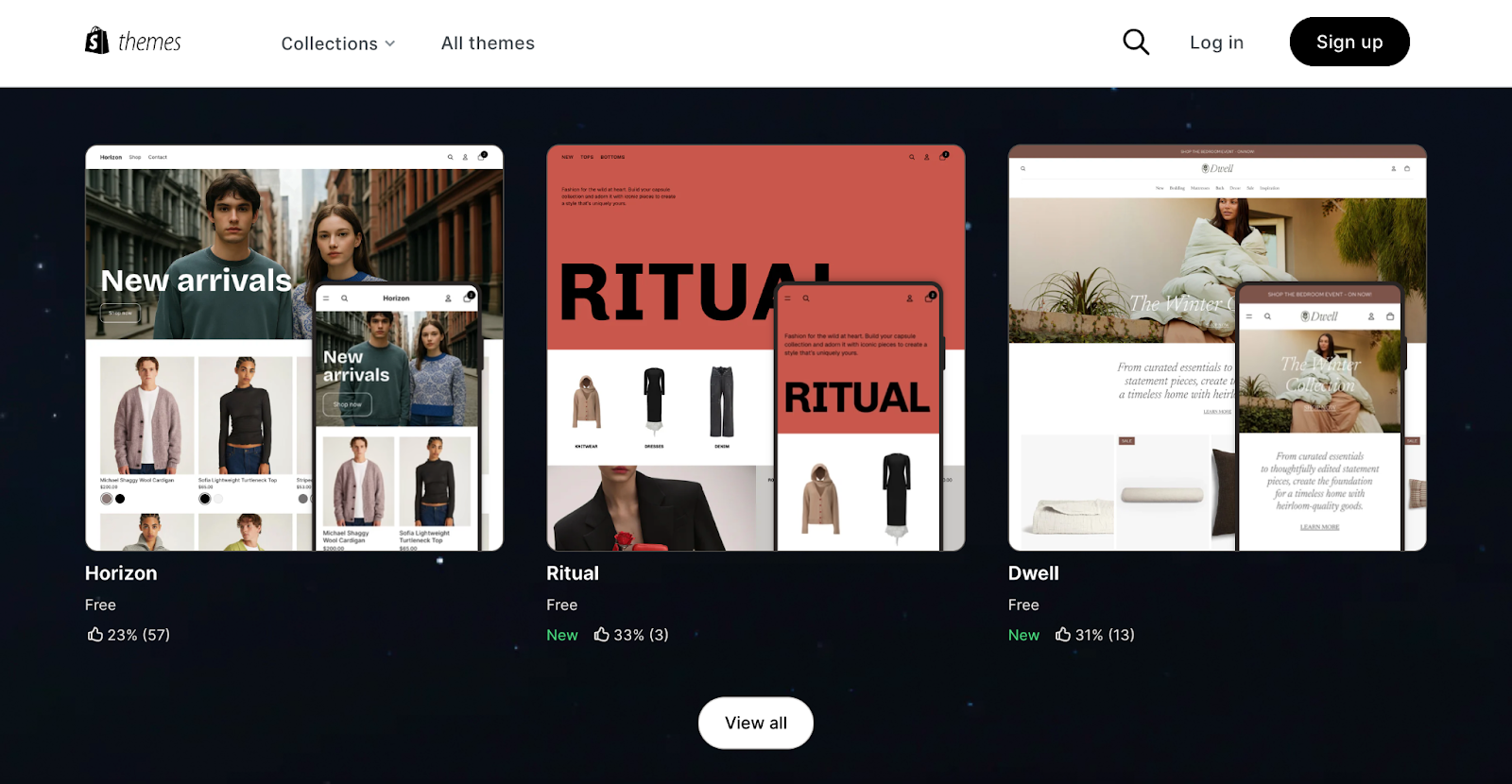
Code bloat, bugs and performance issues
As themes and apps introduce unnecessary JavaScript and CSS, code bloat and performance issues plague stores, which leads to bloated pages and slower load times.
This affects user experience and SEO performance. And unfortunately, there’s not much you can do about it, as custom themes can only get you so far in terms of scalability – brands report hitting walls no matter how many manual optimizations they make. A standard theme approach will never achieve the performance of a properly architected headless solution.
Ultimately, fragmented codebase and inconsistent quality result from relying on multiple third-party apps for custom functionality.
This can introduce bugs and increase the time spent on debugging and integration. If the sections that you add to your store layout don't include the settings or options that you need, you're forced to either compromise your vision or invest in complex custom solutions.
Developer dependency
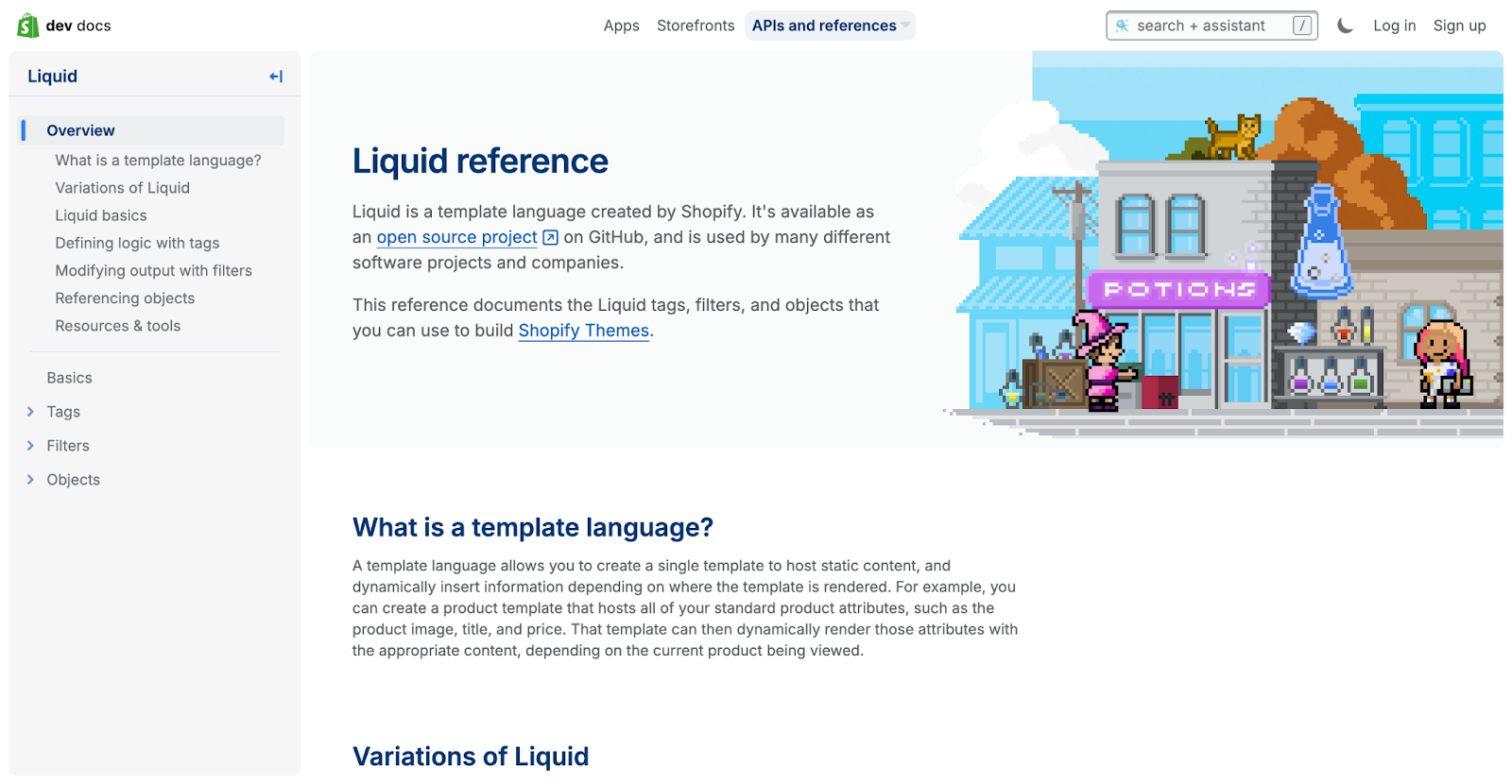
Customizing or updating a Shopify theme often requires a developer familiar with the Liquid templating language. This makes the store harder to maintain for teams without ongoing developer support. Even minor design adjustments need developer intervention, which creates a bottleneck that slows down the iterative design process.
Slower time to market for design iterations
Because every design change or iteration often needs to be handed off to a developer, your site ends up slowing down marketing campaigns, seasonal updates, and any rapid prototyping.
This creates a significant competitive disadvantage for brands that need to move quickly in response to market trends, seasonal opportunities, or testing new creative approaches to drive conversions.
The competitive disadvantage of looking like everyone else
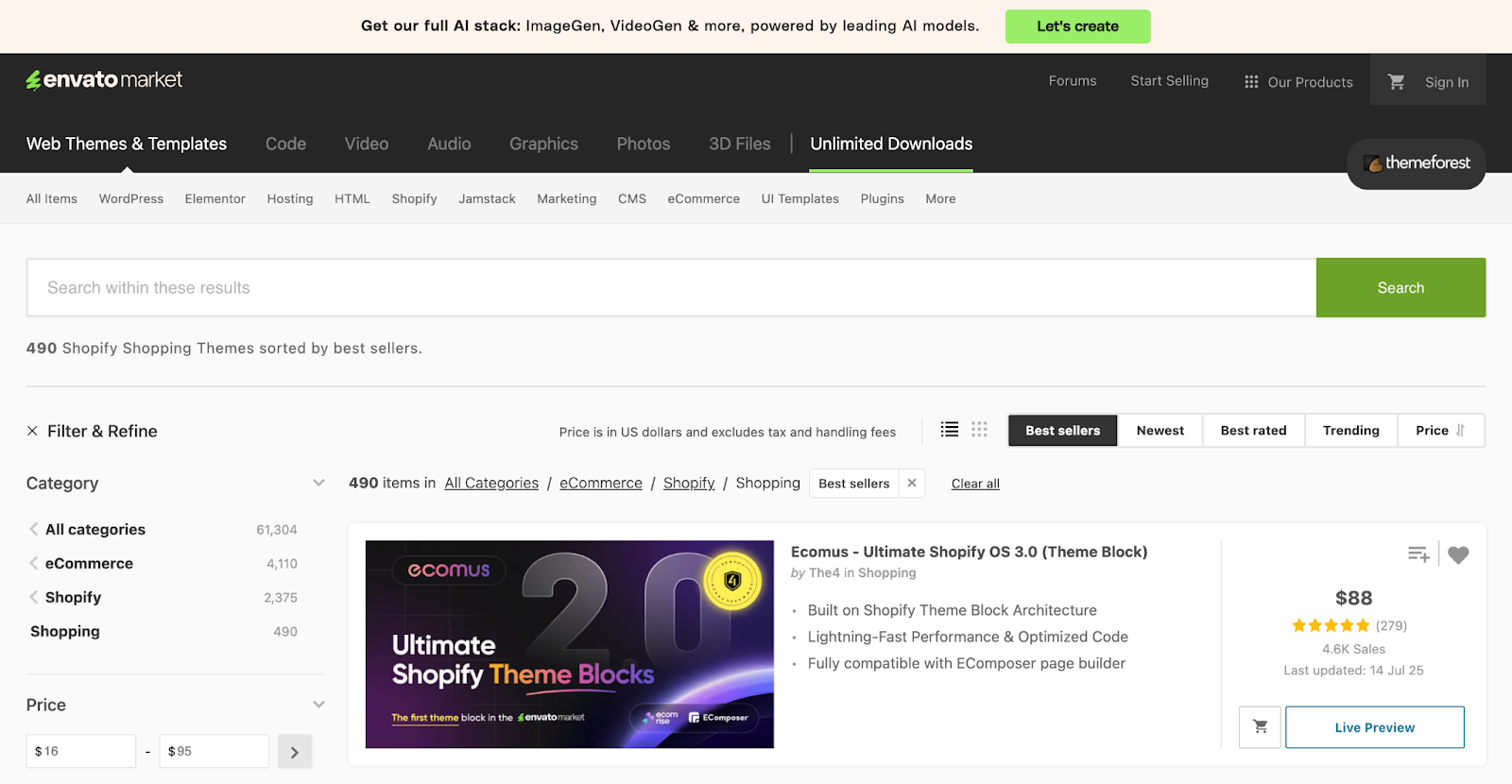
Current design trends demand uniqueness. 2025 is shaping up to be a full-blown color riot. Muted palettes and tasteful neutrals are giving way to hyper-saturated hues, jarring contrasts, and artificial, almost radioactive color combinations. Shopify themes, by their nature as mass-market templates, are not able to quickly adapt to these rapid trend shifts that define brand leadership.
And because Shopify has such restricted capabilities in terms of custom design, more and more brands are compromising design and customer experiences to boost performance. This creates a false choice that design-driven brands shouldn't have to make.
Why Webflow + Shopify is the best of both worlds
The most profitable e-commerce stores share one trait: they refuse to accept that beautiful design and robust functionality are mutually exclusive. ⬇️
The end of the false choice
For years, e-commerce brands faced an impossible decision: sacrifice design freedom for robust e-commerce functionality, or choose creative control at the expense of proven selling tools.
The Webflow + Shopify integration finally eliminates this trade-off.
Two platforms, complementary strengths, and a perfect architecture

Shopify is designed with e-commerce at its core, offering robust tools to manage products efficiently.
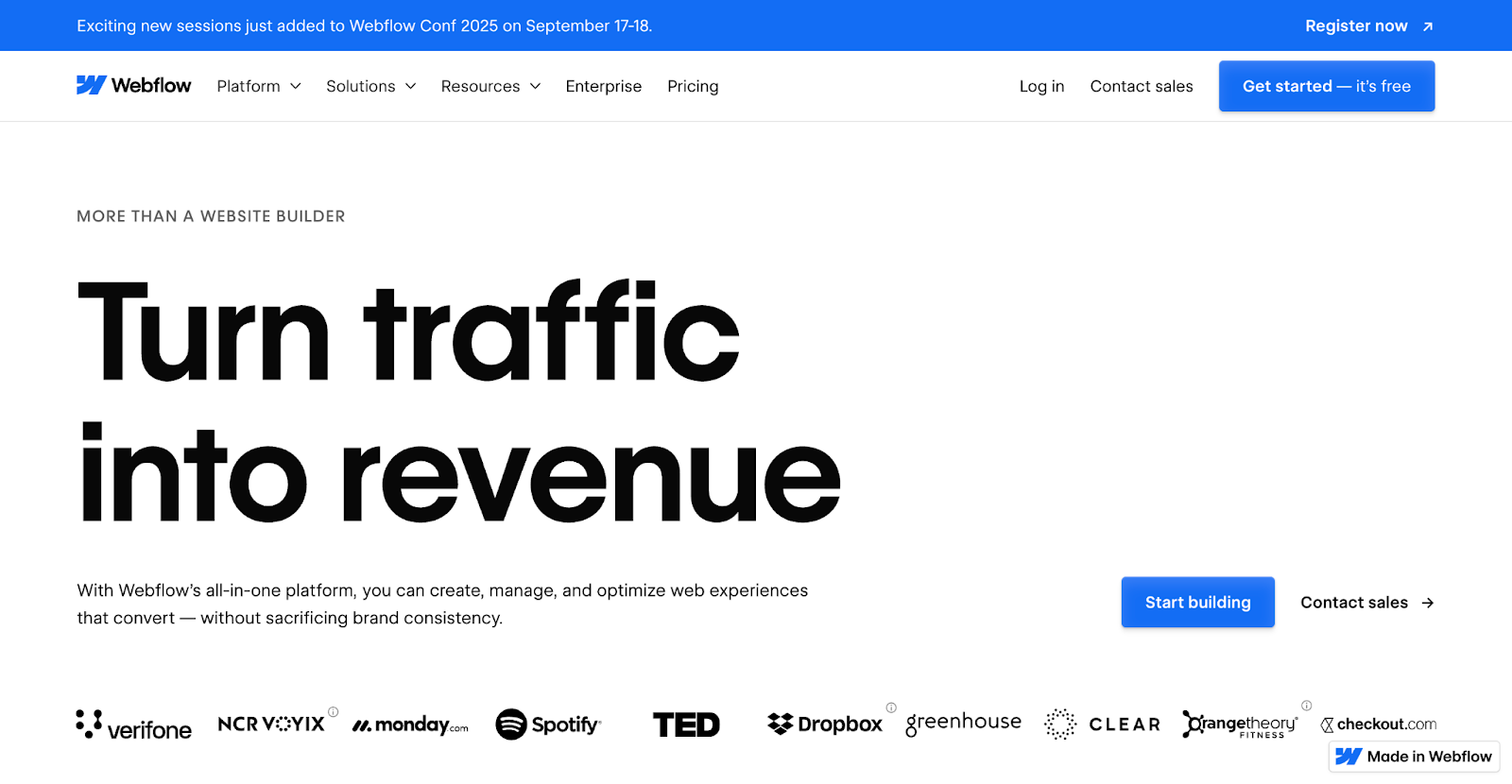
Meanwhile, Webflow is known for its flexibility, top-notch SEO performance, and unique design capabilities that allow companies to create visually appealing and novel-looking sites that can have a real 'wow factor'.
This stack optimizes for site readability, speed, site, site, and SEO, all while also hitting high bars around user experience, design, content management, and checkout flows.
Instead of compromising on any single element, brands get:
- Shopify's proven foundation: Battle-tested inventory management, payment processing, order fulfillment, and checkout optimization
- Webflow's creative freedom: Unlimited design possibilities, advanced animations, custom interactions, and content-rich experiences
- A seamless user experience: Customers enjoy custom-designed browsing with trusted checkout completion
With headless commerce, you can create content-rich websites with high-quality videos, interactive graphics, and e-commerce functionality to design an immersive UX without impacting server-side functionality.
Webflow enables brands to create truly unique experiences that feel authentically theirs. Instead of adapting your vision to fit predetermined templates, you build your store using native Webflow elements and workflows that bend to your creative will.
How? Headless systems let you use the back end as a centralized data hub while optimizing the front end with mobile-first designs.
This capability delivers lightning-fast, responsive experiences that adapt flawlessly to every device and screen size. You get Shopify's battle-tested e-commerce engine powering Webflow's performance-optimized frontend – the best of both platforms without the limitations of either.
The integration delivers enterprise-level e-commerce features through intuitive visual configuration:
- Multi-currency and localization: Seamlessly serve global customers with native currency switching and localization features
- Cart & product upsells: Boost average order value with strategic upsell components built directly into your cart and product pages
- Predictive search & filters: Enhance product discovery with intelligent search functionality and filtering capabilities
- Customizable products: Create unique product configurations that match your brand's specific needs
- Sub-products: Build complex product relationships and bundles using nested sub-product architecture
- JavaScript API: Access advanced customization capabilities for developers who need deeper integration control
💡 Quick tip: You can use Webflow's powerful CMS to create a dedicated blog on your site with videos, case studies, and articles about your services. This setup lets you continuously update content to attract and retain customers while Shopify's backend handles the e-commerce data, and addresses Shopify's content management limitations directly by leveraging Webflow's truly superior content management capabilities.
How to integrate Webflow + Shopify
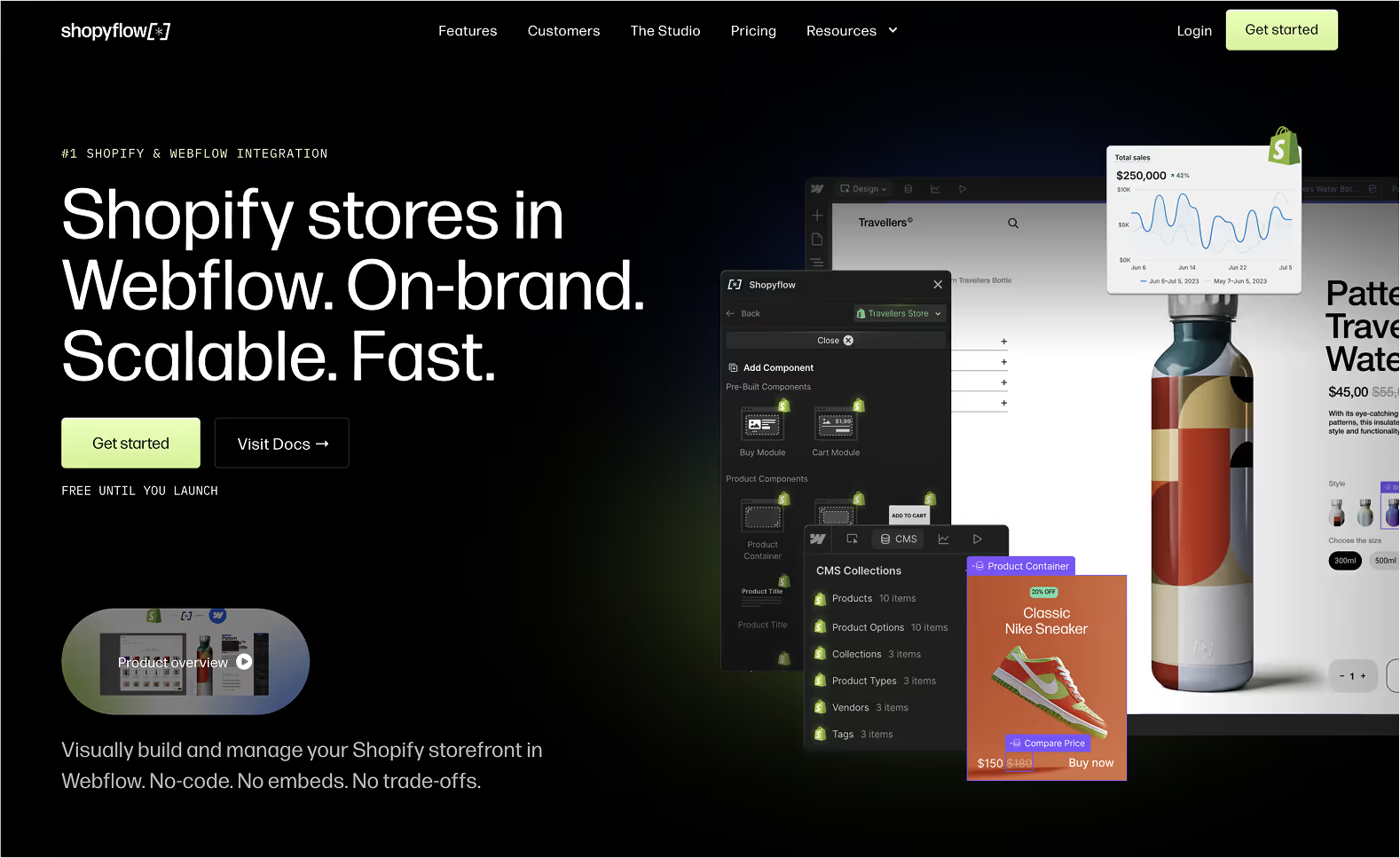
Shopyflow makes the Webflow Shopify integration process straightforward by syncing Shopify data to Webflow CMS, and providing essential store building blocks as native Webflow elements. This eliminates the developer bottleneck that traditionally plagued headless commerce implementations.
Step 1: Set up your foundation
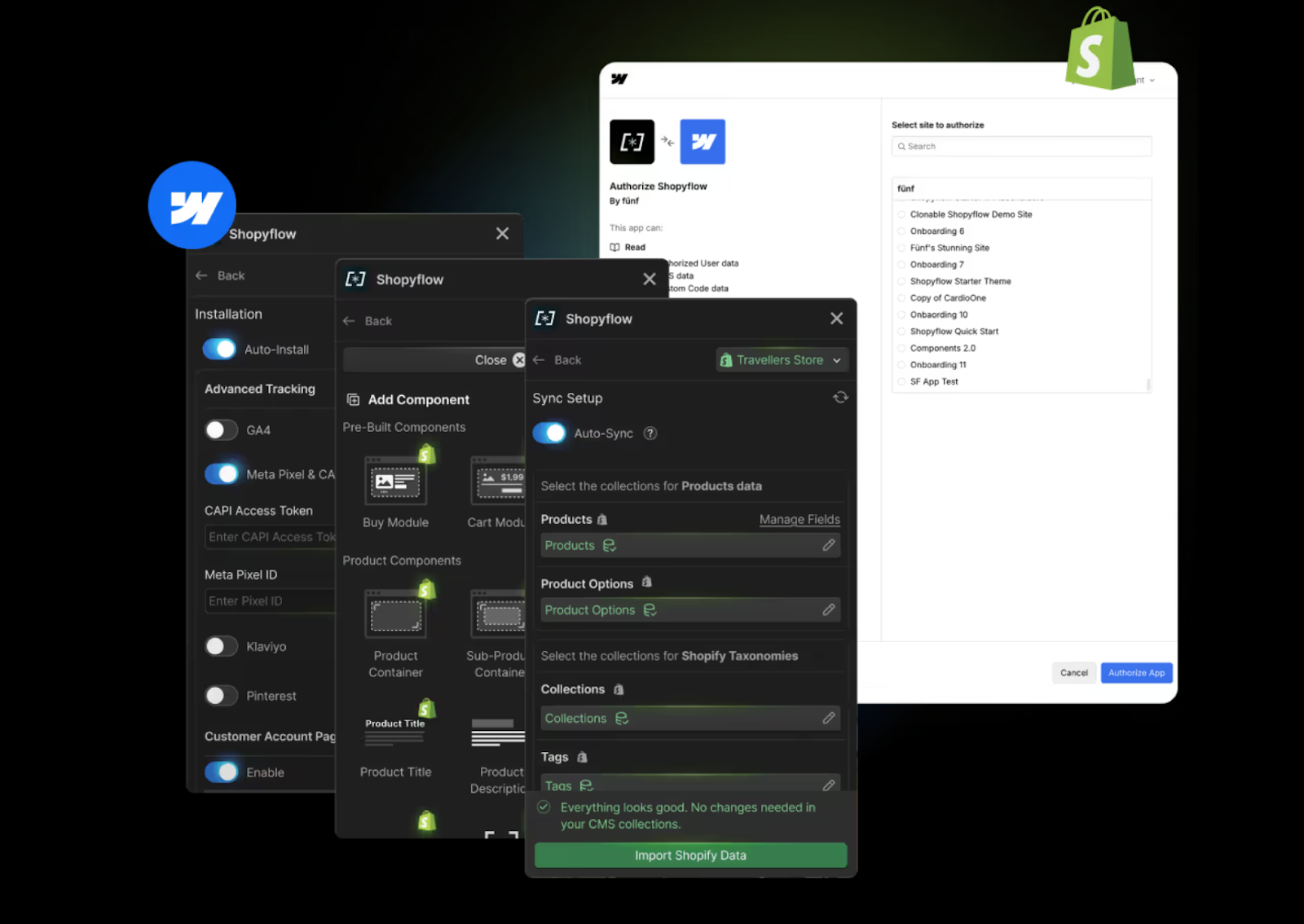
Before beginning, make sure you have:
- An active Shopify store with products configured
- A Webflow account (Basic or CMS plan – no e-commerce plan needed)
Step 2: Install and configure the integration
You can configure your store elements in the designer using the Shopyflow App.
The quick setup process involves:
- Installing the Shopyflow app in both Shopify and Webflow
- Authorizing data access with a single click
- Enabling the Shopyflow app in Webflow's designer
Step 3: Establish real-time data flow
Shopyflow syncs your Shopify product information to Webflow as a CMS collection and makes real-time updates.
This automated synchronization means:
- The store is built visually in the Webflow way, with dynamic data. All the changes to Shopify product information are reflected immediately in Webflow
- Because your product data is sourced from the CMS, you get static page generation – this gives you fast loading speeds that Google rewards and the clean, crawlable code structure that drives organic traffic growth.
Step 4: Access preconfigured e-commerce components within the designer as native Webflow elements
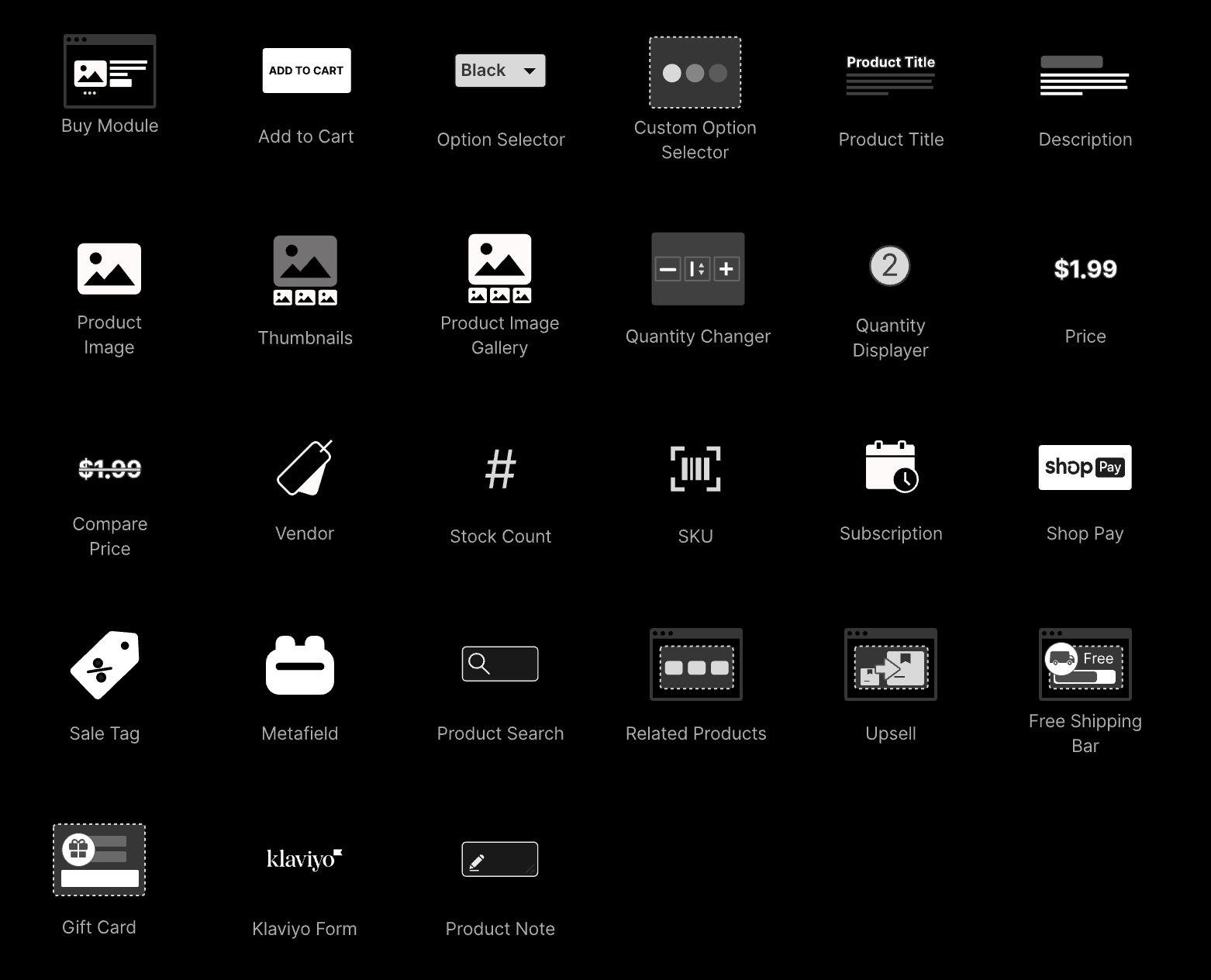
Using the pre-configured component library – where each component is a native Webflow element bound to Shopify data or function with a custom attribute – you can quickly implement complete e-commerce components like:
- Cart
- Product search
- Filters
- And customer pages – all customizable using Webflow's visual design tools without creating widgets from scratch.
Step 5: Design your customer experience
Shopping happens in Webflow, checkout happens in Shopify. Shopyflow maintains unified tracking across both platforms, giving you complete customer journey insights from browse to purchase.
This hybrid approach allows for custom product discovery, unique buying experiences, rich content marketing, and interactive brand storytelling – all while leveraging Shopify's proven checkout infrastructure.
When does pure Shopify remain the better choice?
Not every business needs a custom Ferrari when a reliable Honda gets them where they're going.
While the integration revolution has dramatically expanded what's possible for design-driven brands, pure Shopify still makes sense for very specific business models where operational efficiency trumps creative expression. The key is recognizing when you're one of them – and when you're not. ⬇️
The shrinking list of pure Shopify use cases
In 2025, the scenarios where pure Shopify remains the optimal choice have become increasingly narrow.
With solutions like Shopyflow making Webflow + Shopify integration accessible to non-technical users, most design-driven brands can now access both worlds without compromise. However, there are still specific operational contexts where pure Shopify's limitations become acceptable trade-offs.
- Deep app dependencies may require pure Shopify if the store or its features heavily depend on Shopify apps that require deep platform integration. Pure Shopify may remain the better choice until those apps support headless implementations
- Proof-of-concept stage businesses that are just starting or at a stage where the merchant doesn't need anything unique can use Shopify's templates. This provides a quick, cost-effective way to validate the business model before investing in custom design.
- Complex catalog management benefits from Shopify's 2025 update supporting up to 2,000 product variants per item. This makes it ideal for businesses that deal with extensive catalogs. When managing thousands of SKUs with complex variants, Shopify's native tools outweigh design limitations. However, this applies primarily to businesses where product catalog management supersedes brand differentiation needs.
⚠️ Warning: Most businesses that default to pure Shopify are solving the wrong problem. Webflow + Shopify is worth it when your brand experience drives conversions. It's essential for businesses competing on more than just price – where storytelling, visual design, and product presentation create sustainable competitive advantages.
💵 How much does it cost to integrate Webflow + Shopify?
Shopify subscription
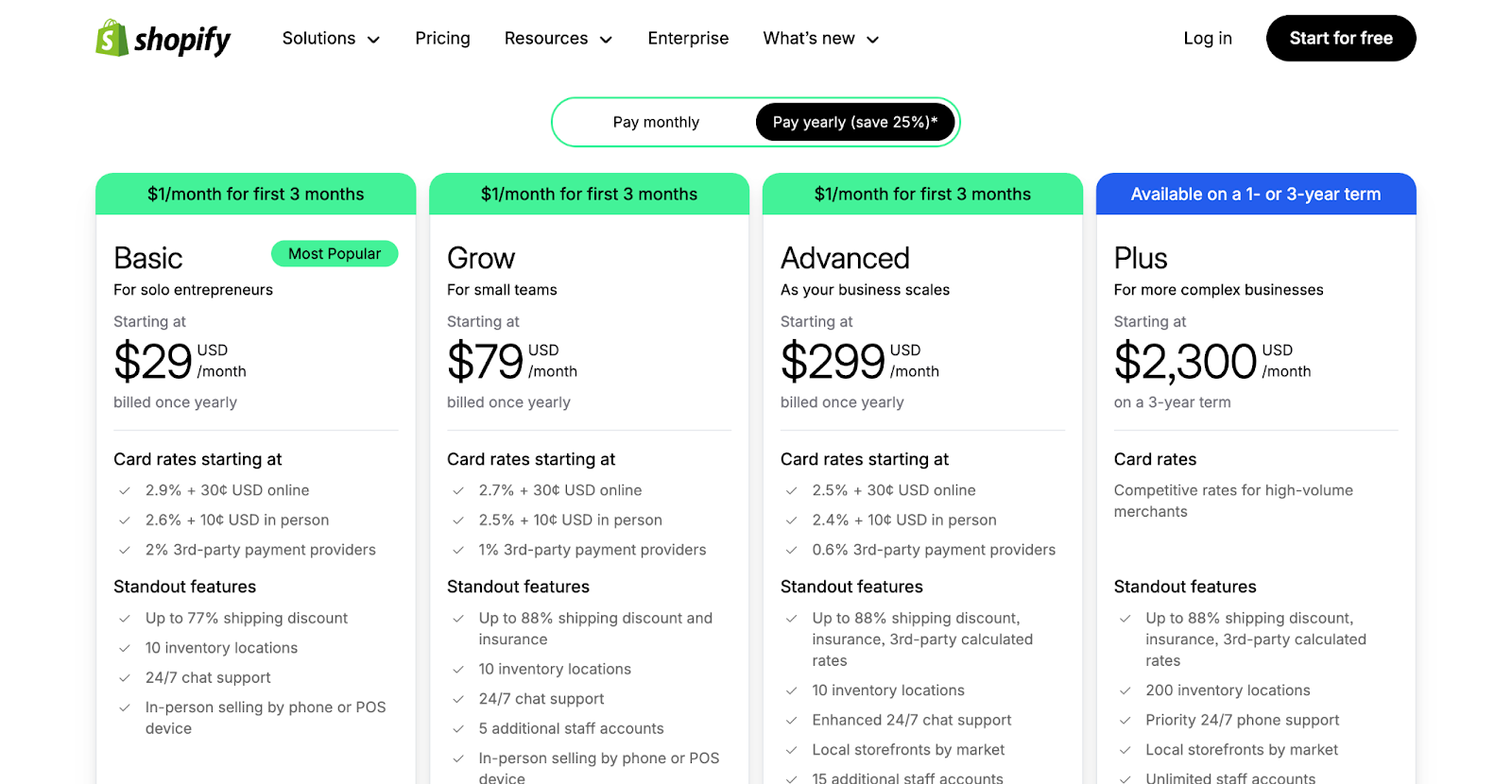
The Basic Shopify package costs $39 per month and charges 2.9% + 30¢ for each transaction.
Webflow subscription
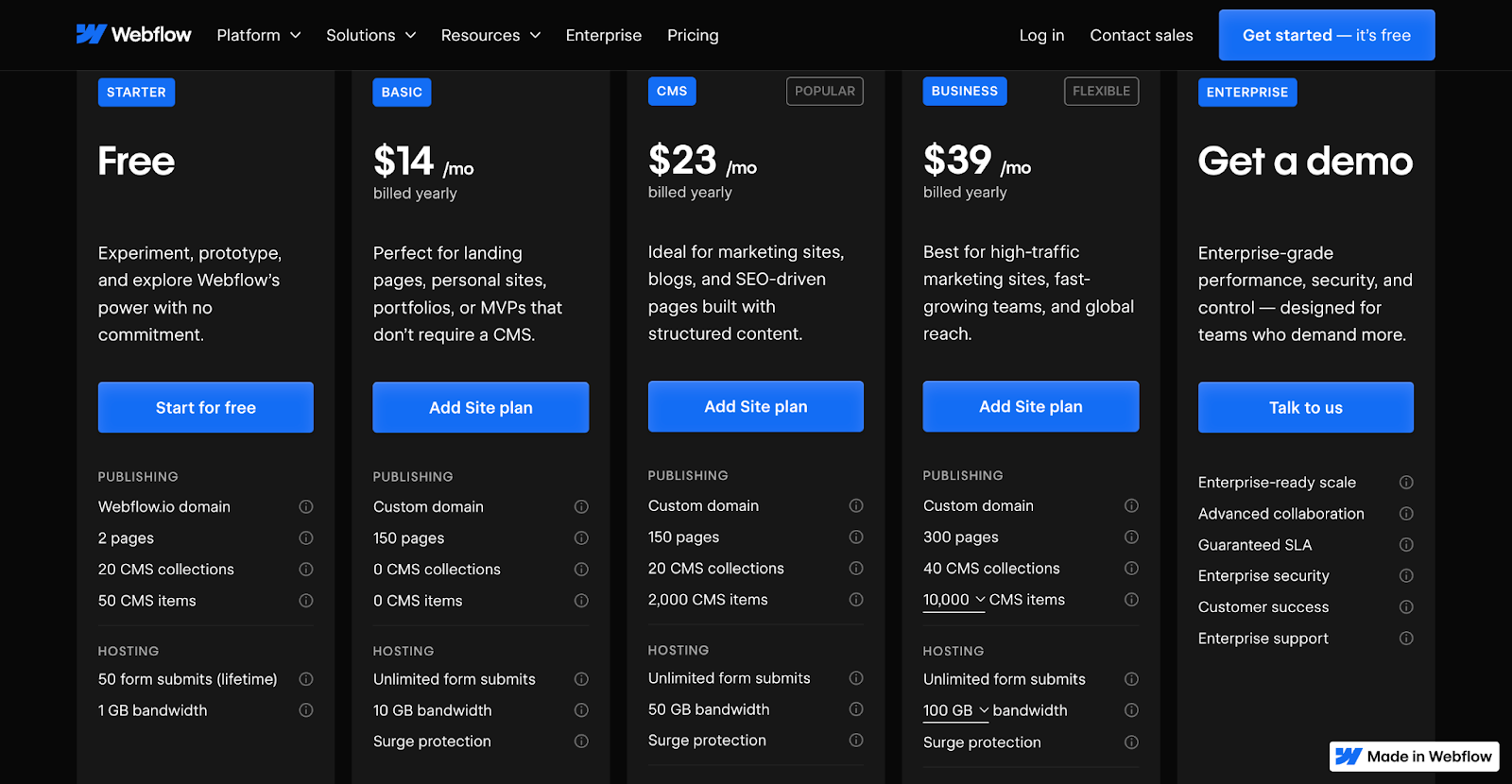
Webflow pricing starts at $14 per month for its general business website builder, while its general CMS plan costs $23 per month.
If you have a few products you can stick with the Basic plan and build static product pages. If you have more products and want to utilize the page templates and auto-sync functionality, the CMS plan is the one you'll need.
- Basic Plan: $14/month is the perfect choice for you to start blogging or host a small website
- CMS Plan: $23/month is the best for content-driven websites
- Business Plan: $39/month is a great choice for small to medium-sized businesses that need more power and flexibility
Shopyflow integration
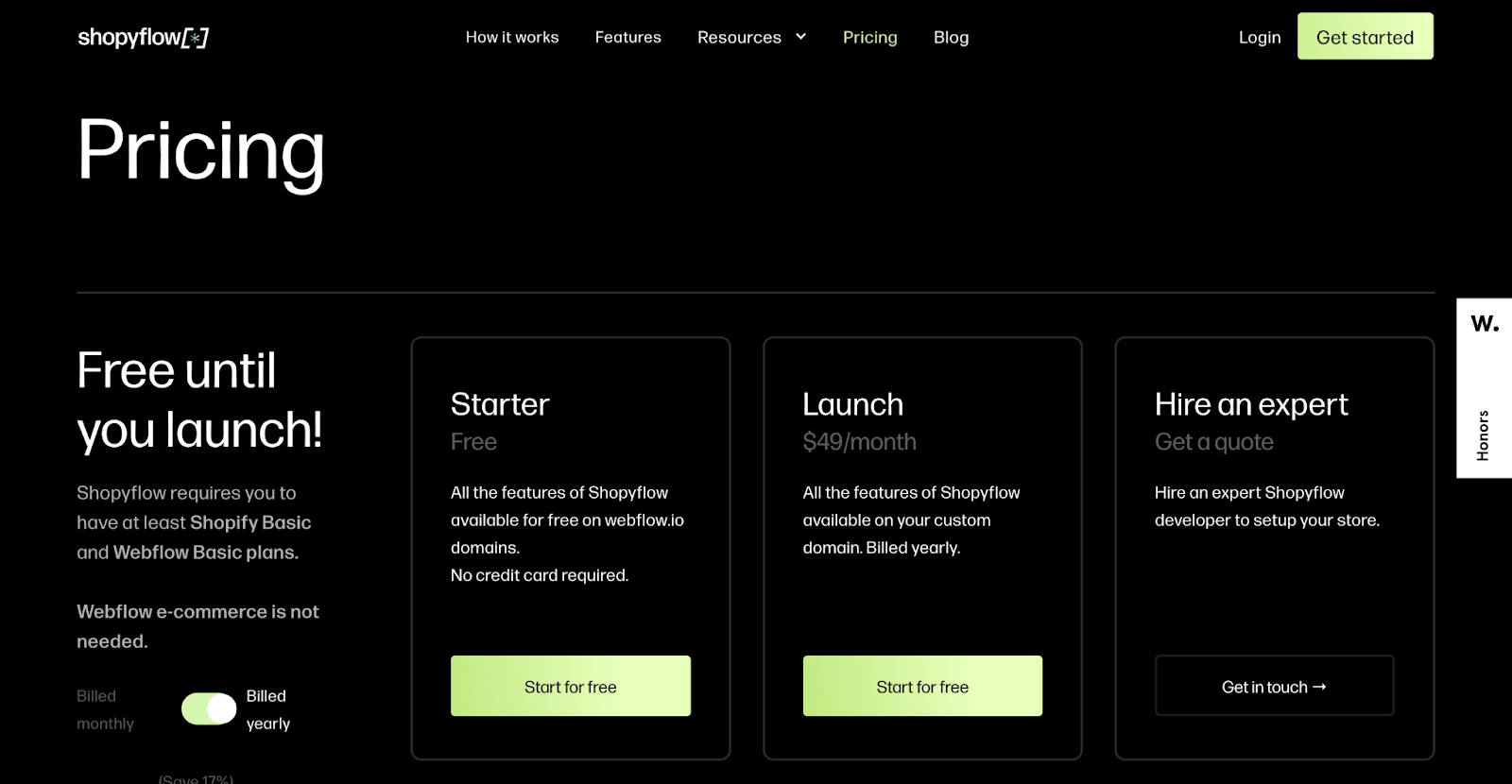
Shopyflow starts at $49/month – delivering a complete solution starting at $111/month total when combined with basic Shopify and Webflow plans.
All the features of Shopyflow are available for free until launch on webflow.io domains. No credit card is required, so you can test it out risk-free until you’re ready to go ahead.
What $111/month actually gets you versus:
- vs. Premium Themes ($50-$300 + developer hours) While premium themes seem cheaper upfront, you'll still share your design with hundreds of competitors. Plus, even basic customization requires expensive developer time that quickly exceeds Shopyflow's monthly cost – without delivering the unique brand experience that drives conversions.
- vs. Shopify Page Builders ($25+/month) Page builders promise flexibility but suffer from severe limitations: restricted page counts, basic design capabilities, and zero access to robust developer ecosystem. You'll hit creative walls that Shopyflow eliminates entirely.
- vs. Custom Headless Development ($10,000-$50,000+) Full custom development offers ultimate control but demands massive upfront investment, months of build time, and ongoing maintenance costs. Shopyflow delivers 80% of the benefits at 5% of the cost, with no technical complexity.
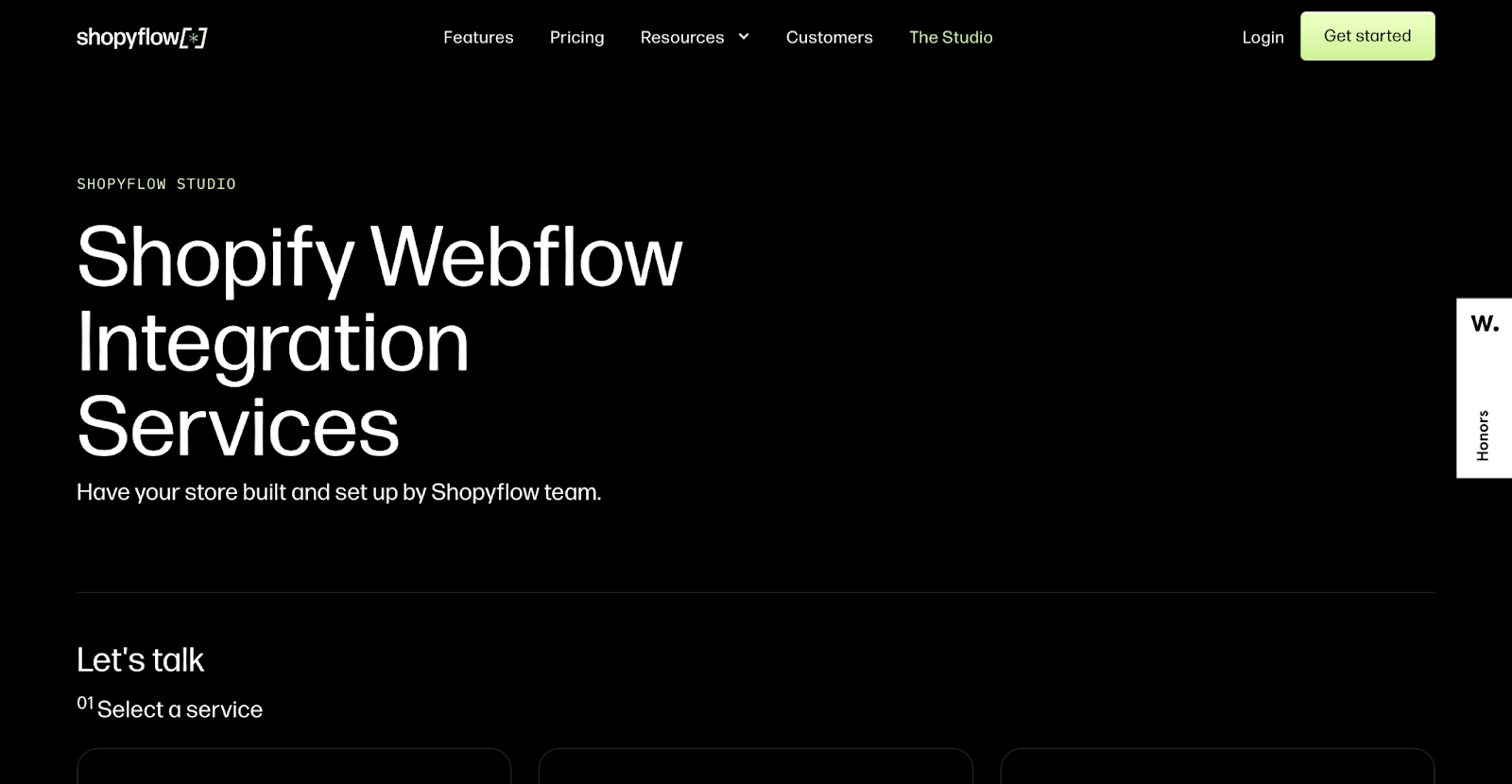
Additionally, the Shopyflow team offers integration services through Shopyflow Studio. They can build, optimize, and maintain your entire headless stack, handling the initial setup, tailoring every detail to your brand's needs, and providing continuous support and updates so you can focus on growing your business.
Total cost analysis of Webflow + Shopify vs pure Shopify
Minimum Viable Integration:
- Shopify Basic: $39/month (yearly)
- Webflow CMS: $23/month (yearly)
- Shopyflow: $49/month (yearly)
- Total: $111/month
Growth-Stage Integration:
- Shopify Grow: $105/month (yearly)
- Webflow Business: $39/month (yearly)
- Shopyflow: $49/month (yearly)
- Total: $193/month
Enterprise Integration:
- Shopify Plus: $2,300/month
- Webflow Enterprise: Custom pricing
- Shopyflow Enterprise: Custom pricing
- Total: Custom, typically $2,500-4,000/month
Technical considerations before choosing
Before making the leap, here's what you need to know ⬇️
Required technical knowledge
- Basic Webflow proficiency: If you can navigate the Designer interface and understand how CMS collections work, you're already qualified
- Zero coding knowledge: With lots of intuitive documentation to guide you along the way, it's simple to implement, intuitive to use and requires no development experience
- Optional advanced skills: Developers can tap into custom code integration for specialized functionality, but it's entirely optional
Development timeline expectations
Depending on your store's scope, you can have it running in a couple of hours with Shopyflow's streamlined setup process and pre-configured components. Compare that to traditional custom development timelines measured in weeks or months.
Maintenance and updates
- Webflow is very easy to handle for both technical and marketing teams thanks to its no-code content editing capabilities, allowing team members to make updates without developer intervention.
- All product management, inventory, and order processing stays in Shopify – the platform your team already knows. Only content and design updates happen in Webflow, creating a clean division of responsibilities.
- Even major site changes happen faster and cheaper in Webflow compared to traditional Shopify theme development. What used to require custom coding now happens through visual design tools.
SEO capabilities
Webflow delivers SEO superiority by default. Clean code generation, customizable metadata, and built-in performance optimization give you technical SEO advantages that Shopify themes can't match.
Complete SEO control includes:
- Dynamic, SEO-optimized title tags, descriptions, and URLs generated from your content
- Automatic sitemap generation with every publish
- Built-in 301 redirects and canonical tag management
- Easy schema markup implementation through community solutions
- Custom optimization opportunities impossible with template constraints
While Shopify provides solid built-in SEO features, its rigid URL structure forces all products into "products/XYZ" format and pages into "page/XYZ" format – limiting customization that can impact search performance. Plus, theme-based optimization often requires constant vigilance against code bloat and performance degradation.
Conclusion
The choice between pure Shopify and Webflow + Shopify integration isn't really about platforms. It comes down to whether you're willing to accept creative limitations or invest in the competitive advantages that custom design delivers.
Pure Shopify made sense when integration was complex and expensive. Today, with solutions like Shopyflow democratizing headless commerce, settling for template constraints is not a technical necessity.
Choose Webflow + Shopify integration if you:
✔️ Need unique brand expression that stands out from template-based competitors
✔️ Require sophisticated content marketing capabilities beyond basic blogging
✔️ Want complete control over customer experience and user journey design
✔️ Plan to scale your design complexity as your business grows
✔️ Value the conversion advantages that custom designs provide
✔️ Prefer building once right over rebuilding repeatedly
Stick with pure Shopify only if you:
✔️ Manage thousands of SKUs where operational efficiency outweighs everything else
✔️ Operate in markets where brand differentiation matters less than transaction speed
✔️ Have extremely limited budgets that cannot accommodate the $111/month minimum integration cost
✔️ Find templates perfectly adequate for your brand vision
For most design-driven e-commerce businesses in 2025, the Webflow + Shopify integration represents the optimal balance of creative freedom and commercial functionality. It's the natural next step for brands that have outgrown one-size-fits-all solutions and are ready to compete on experience, not just efficiency.
Get started for free to see how your store could look and perform with Shopyflow.